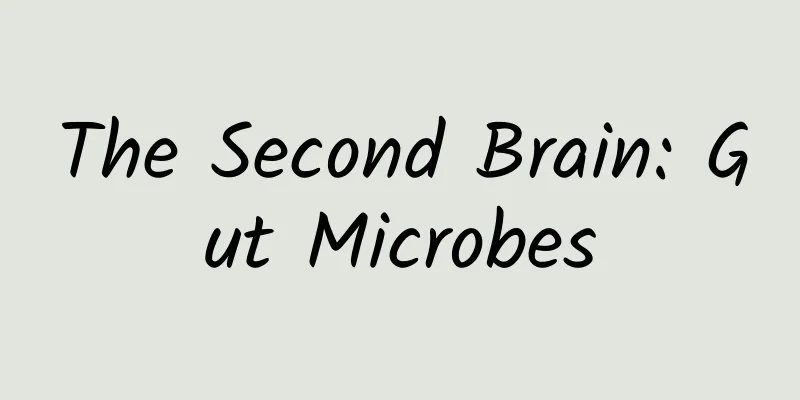Will climate change lead to a chocolate crisis? Is it really time to say goodbye to chocolate?

|
In addition to its special symbolic value at a special time, chocolate has an irresistible magic, a silky taste, and the pleasure brought by theobromine stimulating the secretion of dopamine. Combined with milk and vanilla pods, it is simply a perfect dessert. Copyright image, no permission to reprint Entering the 21st century, many researchers and research institutions have given depressing predictions that if the current trend of climate change cannot be reversed, then by 2050, humans may have to say goodbye to chocolate. Is this true? 01 Cocoa is precious Cocoa beans are precious. In Mayan legends, cocoa was given to the Mayans by the Plumed Serpent . Similarly, in Aztec myths, Quetzalcoatl found cocoa trees on a sacred mountain full of food and gave them to the Aztecs. These myths and legends show that this food has a long history. The Latin name of the genus Theobroma means food of God (theo=god, broma=food). Under the rule of the Aztec Empire, surrounding tribes were required to pay tribute to the Aztecs with cocoa beans. This scarcity made cocoa beans the universal currency of the Aztec Empire. At that time, 80-100 cocoa beans could buy a set of gorgeous clothes. And this was equivalent to only two cocoa fruits (each cocoa fruit contains 30-50 seeds). Unlike gold and silver, hard currencies such as cocoa beans can be eaten. The history of Americans eating cocoa is quite long. During archaeological excavations in Mexico, archaeologists found cocoa beans stored in containers dating back to 1900 BC. And cocoa beans have been found in many sites of different ages. The Olmecs, Mayans, and Aztecs all liked to eat cocoa. However, cocoa beans have never been a cheap agricultural product since ancient times, mainly because there are limiting factors at every stage of cocoa growth . 02 Global warming affects chocolate production In 2019, the International Cocoa Organization predicted that as climate change caused by global warming will greatly affect the production of cocoa beans, the production of cocoa beans will drop drastically in the next 30 years. If the trend of climate change is not reversed, by 2050, we will have no chocolate to eat. Is the reality really so grim? Copyright image, no permission to reprint In fact, in the past 50 years, the total global cocoa bean production has increased fourfold, from 1.18 million tons in 1961 to 5.22 million tons in 2020. However, due to extreme weather in recent years, the total global cocoa production in 2021 has declined, but the annual output has also reached 4.95 million tons. What the future development trend will be requires continued attention. It can be seen that although the production of cocoa beans is affected by the weather, the output is still considerable and will not reach the point of extinction by 2050. 03 Limited planting space Although there is no risk of extinction, cocoa growing does encounter some problems. As a tropical crop, cocoa has strict requirements for its growing environment. The earth is big and there are many people who love chocolate, but the area where cocoa trees can be grown is very limited - within about 20 degrees north and south of the equator, the hot and rainy climate is the favorite habitat of cocoa. So far, the global cocoa production is mainly concentrated in three regions. Africa is the cocoa bean planting center. Cote d'Ivoire and Ghana together provide 52% of the world's total cocoa beans. Nigeria and Cameroon are also major cocoa producing areas. Brazil, Ecuador, Peru and the Dominican Republic are the four American countries, which are another cocoa bean production center. In addition, Indonesia and the neighboring Southeast Asian region are also cocoa bean production centers, which contribute 14% of the total cocoa bean production. Limited planting areas are a fatal flaw in cocoa production. Once pests and diseases break out, it is easy to affect all cocoa trees . Copyright image, no permission to reprint As temperatures rise, overly single cultivars may not be able to effectively cope with emerging pests and diseases. In the 1970s, the "Gros Michel" banana was eventually replaced by the "Cavendish" banana. This helpless choice has actually happened to the cocoa tree. 04 Limited genetic diversity In the long-term selection process, the genetic diversity of cultivated cocoa beans is greatly deficient. Currently, large-scale cultivated cocoa trees are divided into three varieties: Forastero, Criollo and Trintario. Among them, the Forastero variety is the most common and largest cocoa bean variety on the market, accounting for more than 80% of the total cocoa bean production. This variety is not cultivated for its quality, on the contrary, the chocolate flavor of this variety is relatively light, and the sourness, astringency and bitterness are relatively strong, but this variety has a strong ability to resist diseases and pests, so it has become the main variety. As for Criollo, it is the top cocoa with a unique aroma, as well as appropriate sourness and bitterness. However, due to insect pests, its production only accounts for 3% of the total cocoa bean production, and it is mainly distributed in Venezuela in South America. Fortunately, Trintario, a hybrid of the above two varieties, combines the taste and yield advantages of its parents. It has a richer and fuller taste and better cultivation performance. Its origin is the Trinidad Islands in the Caribbean. At present, climate change caused by global warming is becoming more and more obvious . Rising temperatures and changes in seasonal precipitation distribution, high temperatures and drought have a significant impact on the growth of cocoa, which prefers a cool environment. Not only do they bring more pests and diseases, but they also affect the insects that provide pollination services for chocolate. 05 Chocolate brought by little bugs In the face of pests and diseases, a major problem facing cocoa production is how to provide effective pollination services. Cocoa is a self-incompatible plant. Therefore, under natural conditions, only three or four of the thousands of flowers on a tree can actually bear fruit. It is no wonder that cocoa beans were more precious than gold in ancient times. To solve the problem of cocoa bean production, we must solve the problem of pollination. Artificial pollination is an effective method. An experiment conducted in Indonesia found that if all the flowers on a tree were artificially pollinated, the final yield could be increased by 161%. Even if only 13% of the flowers were artificially pollinated, the yield could be increased by 51%. These operations are much more effective than using pesticides and fertilizers to increase production. But the problem is that cocoa flowers are too small, only about the size of an adult's thumb nail (it is hard to imagine that such a small flower will grow into a fruit bigger than a fist in the future), making pollination a task comparable to embroidery. In addition, the cocoa flowers are open for a very short time, and the time for effective pollination is even shorter. If production is entirely based on artificial pollination, the cost of production will inevitably increase greatly, which is not the result we want to see. Copyright image, no permission to reprint So, is there any way to improve pollination efficiency? Traditionally, researchers have believed that small insects of the Ceratidae family, such as the cocoa midge Forcipomyia squamipennis, are effective pollinators of cocoa trees. These are small insects with limited flight ability that prefer a cool, humid environment. For them to provide good service to cocoa trees, it is necessary to create a comfortable working environment for these pollinators , with sufficient shade from large trees, appropriate distances between cocoa trees, and ample humus in the plantations. This is indeed difficult to do, but the latest research shows that dipteran insects such as hoverflies can also provide pollination services for cocoa trees. As long as these insects are provided with sufficient habitats and food plants, cocoa production can be greatly increased. This fully demonstrates the importance of ecological agricultural management. Of course, there is an ultimate solution, which is to collect and screen wild cocoa plants, or use gene editing to find and breed cocoa varieties that can self-pollinate, thereby breaking the restrictions of pollination to the greatest extent and increasing the yield of cocoa beans. The future of chocolate needs more support from technology. Researchers have also made a lot of efforts to solve the problem of cocoa pests and diseases. First, researchers have found that more varieties with excellent heat resistance need to be bred, and wild cocoa populations may be the answer. There are a large number of natural cocoa populations in Colombia, Brazil, Costa Rica and other regions, and they carry excellent germplasm with various resistance genes. These are the gene banks that guarantee chocolate production. With the support of molecular biology, more genes related to effective resistance to pests and diseases, high temperatures and drought will inevitably be located and eventually applied to breeding and production. Furthermore, paying attention to the ecological planting technology of cocoa is crucial to the sustainable development of the cocoa industry. Cocoa production requires a good ecological environment, and maintaining a good ecological environment in the production area can help growers develop related tourism industries and promote the healthy development of the cocoa industry. In addition, we also need to note that so far, of the 20 species of the genus Theobroma, only theobroma cacao and theobroma grandiflorum are cultivated by humans, and there are 15 species with potential cultivation value. This means more flavors, higher yields and a better future. Protecting these gifts from nature is protecting the chocolate we like. References: [1]Manuel Toledo-Hernández et al. 2020. Hand pollination, not pesticides or fertilizers, increases cocoa yields and farmer income. Agriculture, Ecosystems & Environment, 304(1) ,107160. [2] Manuel Toledo-Hernández et al. 2021. Landscape and farm-level management for conservation of potential pollinators in Indonesian cocoa agroforests. Biological Conservation, 257, 109106. Author: Shi Jun, PhD in Botany Review | Wang Kang, Director of the Science Museum of the National Botanical Garden The cover image and the images in this article are from the copyright library Reproduction of image content is not authorized |
<<: Today's Rain | How beautiful is early spring? A poem will tell you!
Recommend
Today is Jingzhe Festival丨Spring thunder resounds through the mountains and rivers, and everything grows and warms up
"After a light thunderclap, a light rain fal...
Training deep residual neural networks based on boosting principle
1. Background 1.1 Boosting Boosting[1] is a class...
Psychology in Design
The interaction effect of the product has a signi...
World Tuberculosis Day丨It is the second largest infectious killer in the world!
Recently, the COVID-19 pandemic has struck again....
Website copywriting planning, the three most easily overlooked points!
We always think that we have enough knowledge and...
Subvert your cognition! Is it true that a vegetative person can tickle himself?
Recently, a saying has been circulating on a cert...
The death of Qvod: China's Internet policy dividend period has ended
The topic about Kuaibo and Wang Xin is very sensi...
IBM Chief Scientist: AlphaGo does not have even 1% of talent
Ever since Google's artificial intelligence A...
Marketing analysis of Jay Chou’s first live broadcast on Kuaishou!
It took nearly two months from the official annou...
"A bumper harvest" to celebrate the autumn harvest! Wait, what does "a bumper harvest" mean?
In the golden autumn of October, fruits and veget...
How to make robots? How to write robots?
How to make robots? How to write robots? For robo...
Scientists have made the "purest silicon in the world". Are quantum computers really coming?
On May 7, 2024, researchers from the University o...
NetQin hopes to clear its name as soon as possible and make full efforts to transform into a platform-based strategy
With the advent of the mobile Internet era, more ...
This "little superman" among animals can actually stack physical and chemical buffs when facing enemies
In nature, all kinds of animals have evolved diff...
In-depth analysis of Pinduoduo’s product operations in 2019!
Jobs said that consumers don’t know what they nee...









